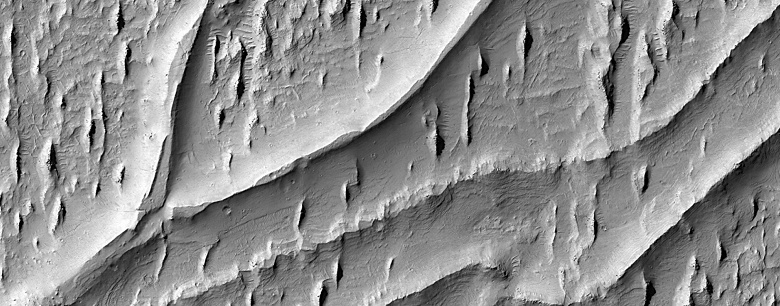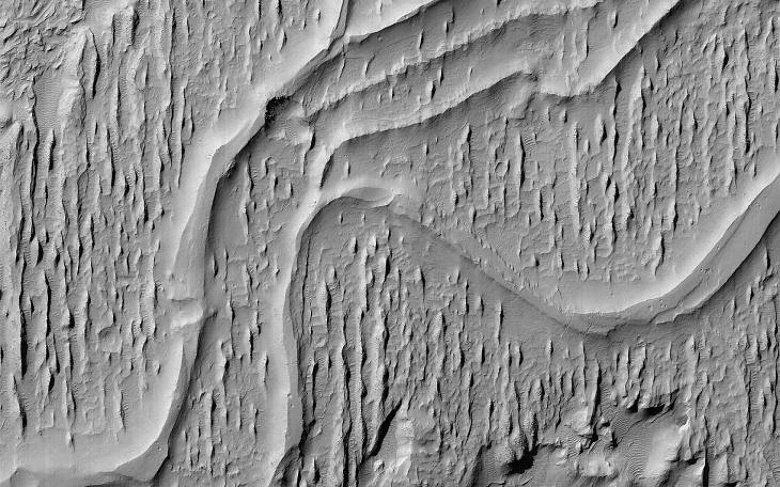A photograph taken by a spacecraft indicates the existence of ancient rivers on Mars
The Mars Reconnaissance Orbiter has captured images of an ancient river that flowed across the surface of Mars billions of years ago. The image was published in «Planetary Photo Magazine» NASA.
The photograph shows ridges in the Aeolis Planum region, which represent an ancient river that once flowed along Mars during an era of milder climates. This diversity of archaeological traces in the geological history of Mars contrasts sharply with the modern appearance of the planet.
Twisting shapes — the result of an ancient river filling its bed with gravel and fine-grained materials surrounding the waterway as shorelines shifted. Scientists are attracted to this phenomenon, which they call «inverted riverbeds». When the river dried up, fine-grained materials were carried away, leaving a trail of rocky ridges.
The image was taken from the orbit of Mars at an altitude of about 267.21 kilometers above its plains. The HIRISE (High Resolution Imaging Experiment) camera enabled scientists to obtain these clear and detailed images.

A special feature of Mars is the planet's significant loss of its atmosphere, turning it into an extremely dry and deserted place. It is currently 1,000 times drier than the driest desert on Earth. In combination with the irradiated surface of Mars, this creates very unsuitable conditions for the existence of life.
However, the NASA rover «Perseverance» is actively exploring the surface of Mars, looking for potential traces of primitive life. His task — carefully study the area, including the areas where these ancient rivers flowed.
In the long term, there are plans to send even more missions to Mars, both orbital and surface, to study the planet further and look for additional evidence of the possible past or present existence of life on the Red Planet. In addition, active development is underway of a compact Martian aircraft that is capable of crossing the Martian desert at a speed of approximately 217.3 kilometers per hour. Scientists are confident that future scientific expeditions to Mars will provide more and more clues to the mysteries of the Red Planet.

